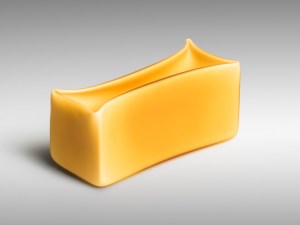From 22nd March to 17th May 2019 you can visit our Galerie Kuzebauch and experience the exhibition of Ondřej Strnadel – SOAP.
Moravian Wallachia (Valašsko) is one of the Czech Republic’s richest regions in terms of glass production traditions. Today, such traditions are primarily preserved and cultivated by the High School of Applied Arts and Glassmaking Valašské Meziříčí and the Glass Design Studio at The University of Tomáš Baťa in Zlín. It is no coincidence that these institutions are also closely associated with Czech glass artist Ondřej Strnadel (born 1979), who teaches glassmaking in both Valašské Meziříčí and Zlín and is continually drawing inspiration from his native region. Yet such local inspiration is also purposefully attuned to a wider audience, as attested to by successful presentations of Strnadel’s works in countries such as France, Germany, Poland, Bulgaria, Slovakia, Holland and Italy. In 2018, the Czech glass artist was the recipient of the Bavarian State Prize.

Understanding Strnadel’s work requires an appreciation of the wider history of modern Czech art glass. Since its emergence during the mid-20th century, Czech art glass has built a strong reputation for its artistic ingenuity and originality on the one hand, and exquisite craftsmanship on the other. But in most cases, this represents a merging of two divergent worlds – one represented by the artist, and the other by the glassmaker; one ostensibly for the artistic creator, and the other for the hands-on craftsman. But Strnadel belongs to a privileged minority able to operate in an entirely self-reliant capacity across both of these fields. Which may also help to explain why his works lack any kind of pretence or affectations. Rather, despite considerable creativity, they remain modest, forthright, honest, and accessible to a wider audience.

The SOAP collection features works by Strnadel created with the aid of glass, hand-blown into a wooden mould. The works feature oblong forms and distinct colours, with surfaces broken up by cleverly distributed minor irregularities. In this sense, Strnadel continues to further cultivate a distinctive personal aesthetic of plain geometric objects given a sense of uniqueness via the addition of atypical details. Such details help to imbue Strnadel’s glass art with a sense of internal dynamism, tension and refined craftsmanship.


 Klára Horáčková, White Shoots
Klára Horáčková, White Shoots Eva Eisler, From the Past – Amber
Eva Eisler, From the Past – Amber Lada Semecká, Universe
Lada Semecká, Universe Vladimíra Klumpar, Orange Wave
Vladimíra Klumpar, Orange Wave








